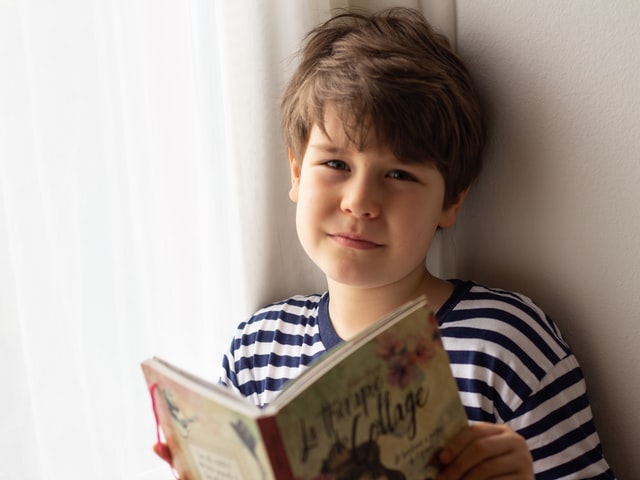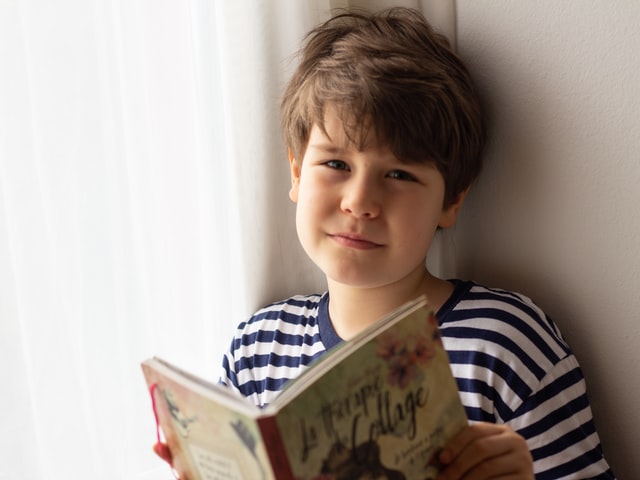
Many books on children’s anxiety have been written, but which ones really help? How many of these books are based on Cognitive Behavioral Therapy (CBT), a method considered to be the most effective in lowering anxiety? Not so many. This article will help you separate the “cute” worry books from the really effective ones that you and your child will use over and over.
For this article, I reviewed many children’s anxiety picture books. I was somewhat dismayed that only a few are solidly based on CBT (described below) or any other research-based techniques to reduce worry. The first 5 books listed are rooted in CBT and are highly recommended. The remaining 4 are popular children’s worry picture books that will give your child an opportunity to discuss worry. These picture books go up to age 12 years.
CBT in Children’s Worry Books
First, let’s learn about CBT. This science-based method is based on changing the thoughts and behaviors that trigger or worsen anxiety. There are three main steps in CBT:
1. Identify the negative thoughts. For example, “My Worry Monster is telling me that Mom won’t pick me up after school.”
2. Challenge the negative thoughts. Following our example, “You are wrong Worry Monster, you lie!” The child can say it, write it, or draw it. It is very empowering to talk back to a worry.
3. Replace the negative thought. Ideally, a child should replace the worry with what is true. For example, “You are a liar, Worry Monster. My mom is coming to pick me up after school!!”
Another strategy in CBT is containment, which means containing a worry in space or time as discussed in the fifth book.
1. Shrinking the Worry Monster, A Kid’s Guide for Saying Goodbye to Worries by Sally Baird, Ph.D. and Kathryn O. Galbraith
“Worry Monster has been whispering mean things to kids and making them feel terrible. Now it is up to Brooklyn and Jackson to discover the monster’s secret—and stop him!” This delightful story, written by a child psychologist and a children’s book author, is based on all three steps of CBT and offers time-tested methods to help overcome worry and fear. Several appendices help parents and caregivers use CBT tools most effectively.
2. Wilma Jean and the Worry Machine by Julia Cook
Meet Wilma, who worries so much she is a worry machine! This fun book, written by a school counselor, offers CBT strategies in the form of identifying worries and then challenging the worry by deciding whether it is controllable or not.
3. What To Do When You Worry Too Much, A Kid’s Guide to Overcoming Anxiety by Dawn Huebner, PhD
“Did you know that worries are like tomatoes? You can’t eat them, but you can make them grow, simply by paying attention to them.” This clever workbook uses CBT to help kids overcome anxiety. It contains lively metaphors and how-to-steps sprinkled throughout. This may be the “grandmother” of all worry self-help books!
4. Help Your Dragon Deal with Anxiety by Steve Herman
Dragon was wasting time “over worry and distress. He suffered from anxiety and fretted to excess!” The pet dragon has many identified worries and asks numerous “What if” questions. Worries are identified in this rhyming book with steps 2 and 3 of CBT subtly identified.
5. The Worry Box: A Picture Book for Comforting Anxious Children by Suzanne Chiew
“Murray Bear is supposed to go to the waterfall with his sister, Molly, to meet a friend, but Murray is worried.” This lovely picture book uses the CBT technique of containment. Murray has many worries which keep him from activities, but he finds that when he puts the worries in a box, he can have fun.
6. When My Worries Get Too Big by Kari Dunn Buron
“Sometimes kids have worries, but they also have things they are very good at.” The book does an excellent job of identifying worries with a focus on rating the worry and then using relaxation techniques to lower anxiety. Although not CBT, it is a very useful book.
7. Ruby Finds a Worry by Tom Percival
One day Ruby “finds something unexpected. A Worry. It’s not a big Worry at first. But every day it grows a little bigger.” Ruby identifies that she has a worry, however there are no examples of what worries she has or how to talk back to a worry.
8. The Don’t Worry Book by Todd Parr
“Sometimes you worry. Worrying happens when you feel afraid something bad is going to happen.” The author identifies numerous worries for small children. The worries are not challenged or replaced, but rather distracting and comforting activities are provided.
9. Wemberly Worried by Kevin Henkes
“Wemberly worried about everything.” “Then it was time for school to start. And Wemberly worried even more.” This book does an excellent job of identifying many worried thoughts. There are many online activities related to this book.
What You Need to Know about Children’s Worry Books
When choosing a worry book for your child, do get one that really helps your child with anxiety. In one creative form or another, the first five reviewed books give children and caregivers important CBT steps to identify, challenge, replace, or contain the worry thoughts that are plaguing them. The remaining books are valuable in opening a conversation with your child about worry and in offering other strategies to reduce anxiety. If you know of other researched-based books on worry, please do submit your thoughts on my website so others can see them.











